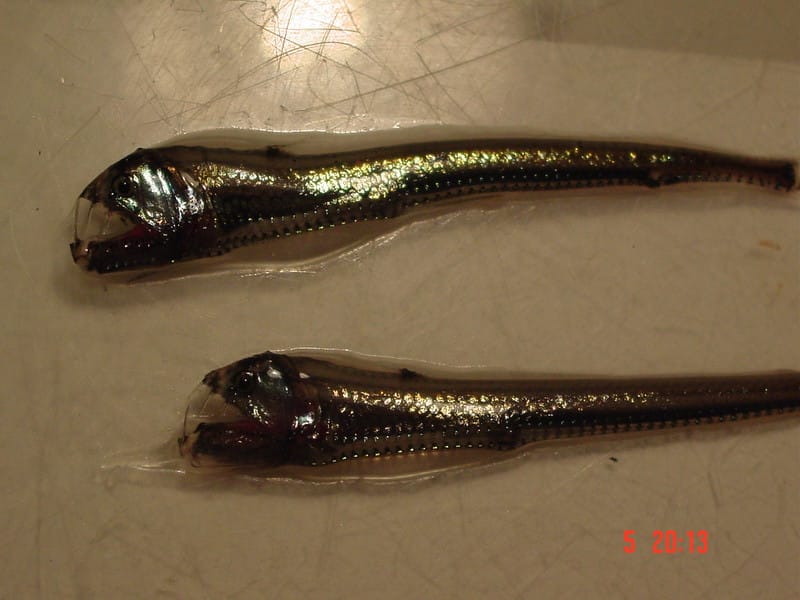Everything You Need to Know About Viperfish

Image Source: Wikimedia Commons
The world’s oceans are vastly unfamiliar and uncharted places, seeing as how a large percentage of their area hasn’t been properly explored since.
Plenty of mysterious creatures reside in these dark waters, and perhaps one of the most fascinating is the viperfish.
Unfortunately, there is still a lot left unknown regarding this interesting marine life form.
On the Reef Nation website you can read more about viperfish and their enigmatic particularities.
In this article, we will provide you with a general overview of the species and its main traits so that you can better understand this shadowy ocean lurker.
What Is a Viperfish?

Source: NOAA Photo Library
According to Encyclopedia Britannica, the term ‘viperfish’ can refer to any of the nine species in the Chauliodus genus of the Stomiiformes order.
Nevertheless, the most well-known is the Chauliodus sloani, a relatively small creature that grows up to 12 inches in length. Its other brethren are similar in size.
Still, there is one species of viperfish that exceeds these measurements, namely the one-foot long Chauliodus macouni.
Viperfish are usually dark and silvery blue in color.
However, some species are also green, silver, or black.
They have luminescent organs along their sides, which they use to attract prey.
These are known as photophores.
By far their most notable characteristic is represented by their long fangs. These protrude from the upper and lower jaws and can curve around the head of the fish in order to allow it to close its mouth.
They are also what gives the viperfish its name, as they resemble the choppers of a viper that offer a firm grip on prey that withers around and struggles.
Viperfish Life and Habitat
Viperfish are deep-sea dwellers. They can be found as far down as 5,000 feet in depth during the daytime.

Source: Biodiversity Heritage Library
When darkness falls, they rise in shallower waters that are around 2,000 feet deep, or even less.
They prefer tropical and temperate oceans, as they are the most suitable for their development, as well as their hunting abilities.
The photophores on viperfish move like fishing rods and flash natural light intermittently.
As previously mentioned, these are used to attract prey. But that is not their sole purpose.
These luminescent organs are used for communication.
A viperfish can send a message to its rival with their help, as well as signal to an available mate.
Very little is known about the reproductive habits of viperfish other than this. Because they live far away from the human gaze and prefer darkness, they have been seldom observed during this time.
Still, it is acknowledged that they are external breeders.
This means that females lay eggs into the water and let them be fertilized by a willing male.
These eggs are spawned all year round, but the largest concentration of young viperfish appears between January and March.
The little ones are left to fend for themselves in the ocean, learning to hunt and adapt alone.
Those that survive until maturity carry out the legacy, as this species is a hardy one.
In fact, one single viperfish can live between 15 and 30 years in the wild. This is an impressive lifespan for a marine creature this small.
Nevertheless, they wither away immediately in captivity, dying in just a few hours.
What is more, sharks and certain species of dolphins feed on them, which quickly balances their numbers.
Viperfish Feeding Habits
The main diet of viperfish consists of small fish and crustaceans. They lure the unsuspecting victims with their photophore and then impale them with their sharp fangs.
They have a hinged skull, as well as an extremely large stomach, which allows them to ingest large prey as well.
Once they have had plenty to eat, they store the food in their stomach.
In addition, their metabolic rates are incredibly low.
For this reason, viperfish can go for extended periods of time without needing to hunt or eat.
Thus, when food is scarce, they manage to make it.
They are some of the most resilient creatures in the ocean, and the world in general, which makes them all the more dangerous as predators.
Conclusion
The viperfish is a deep-sea predator with sharp fangs and luminescent organs that it uses to draw in unsuspecting crustaceans and small swimmers.
Over time, few pieces of information have been uncovered about it, as it resides far out of our reach.
Although we have a vague idea of what its life is, there is still a lot that needs to be investigated by marine biologists.

